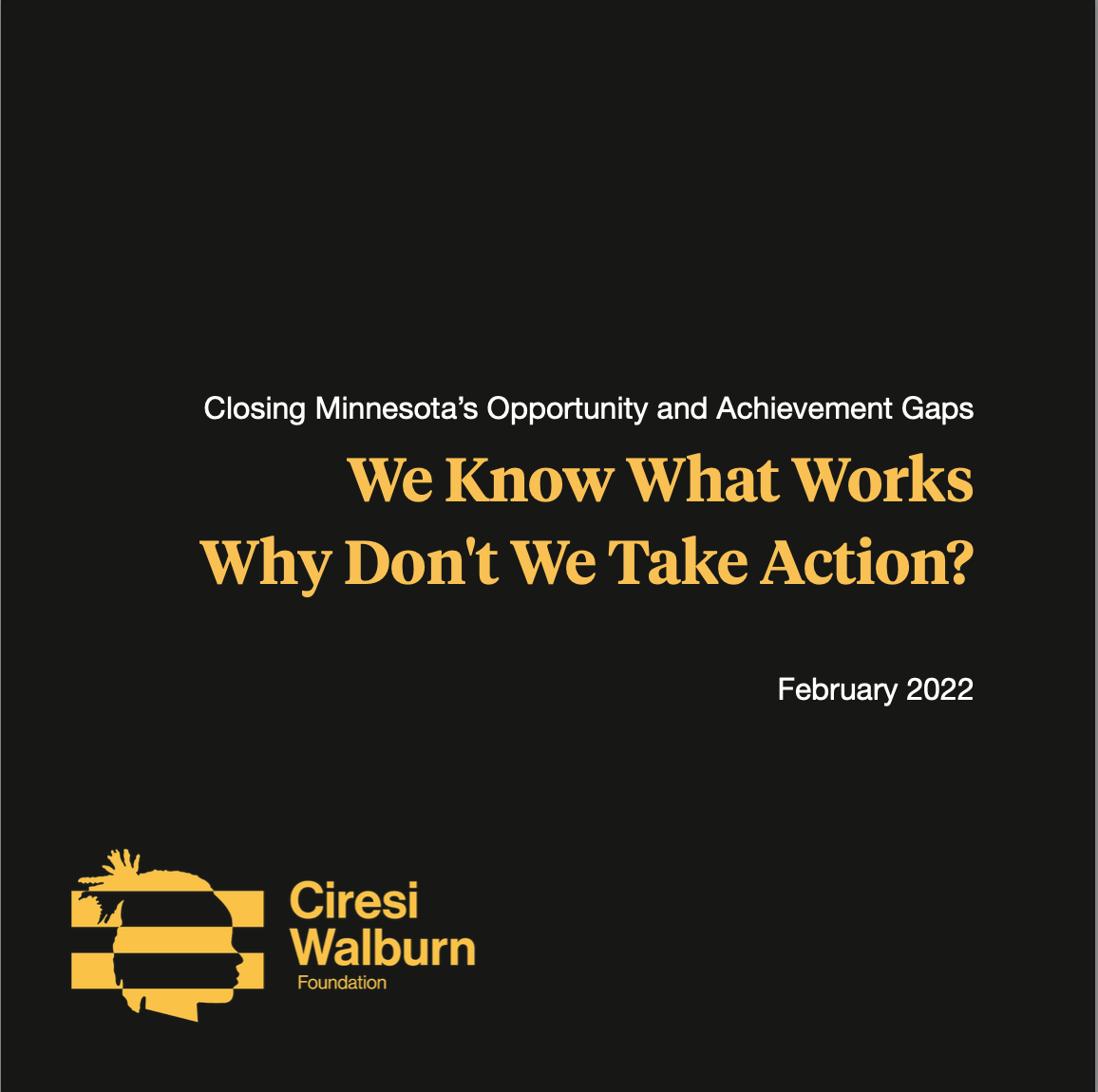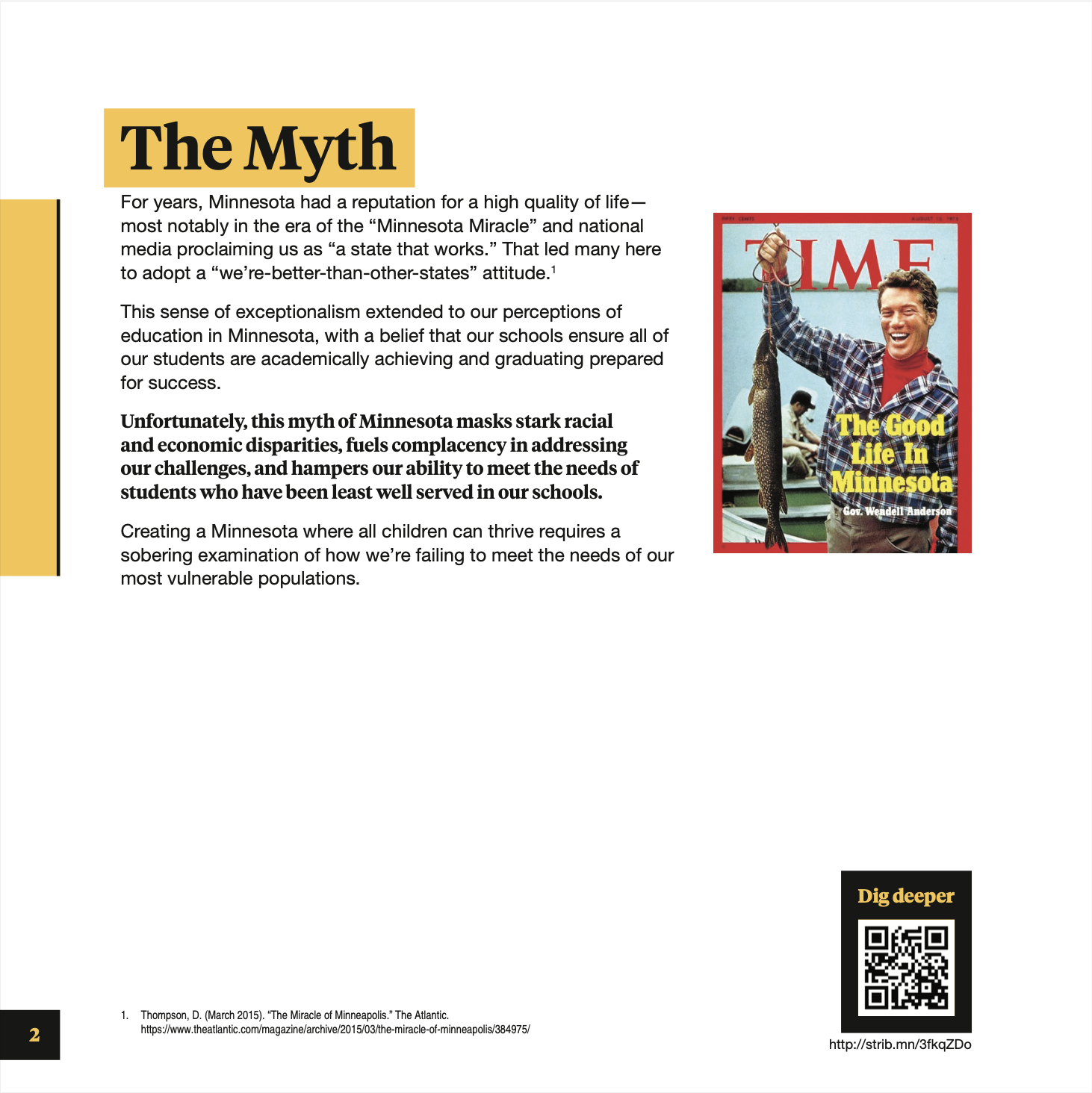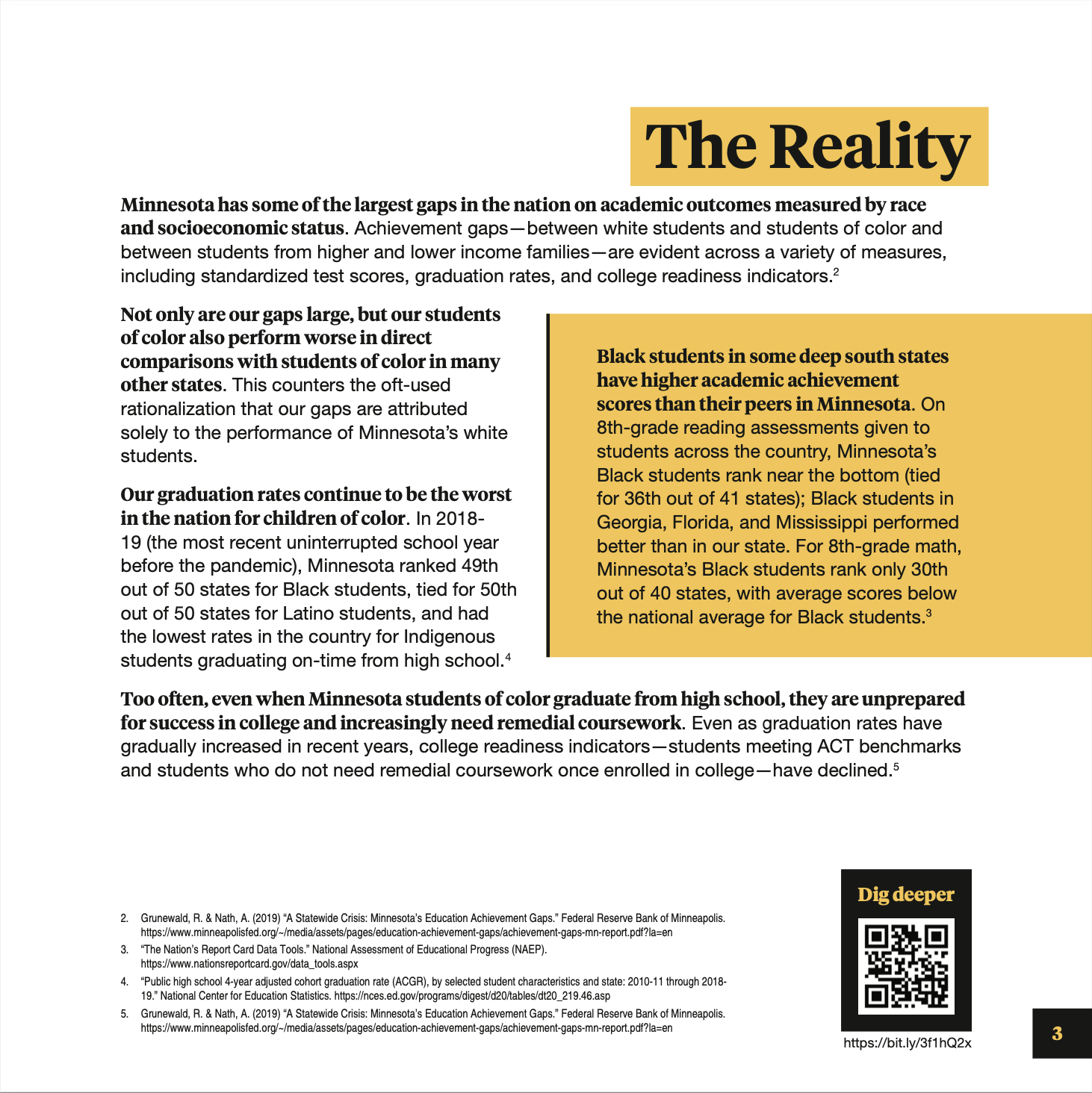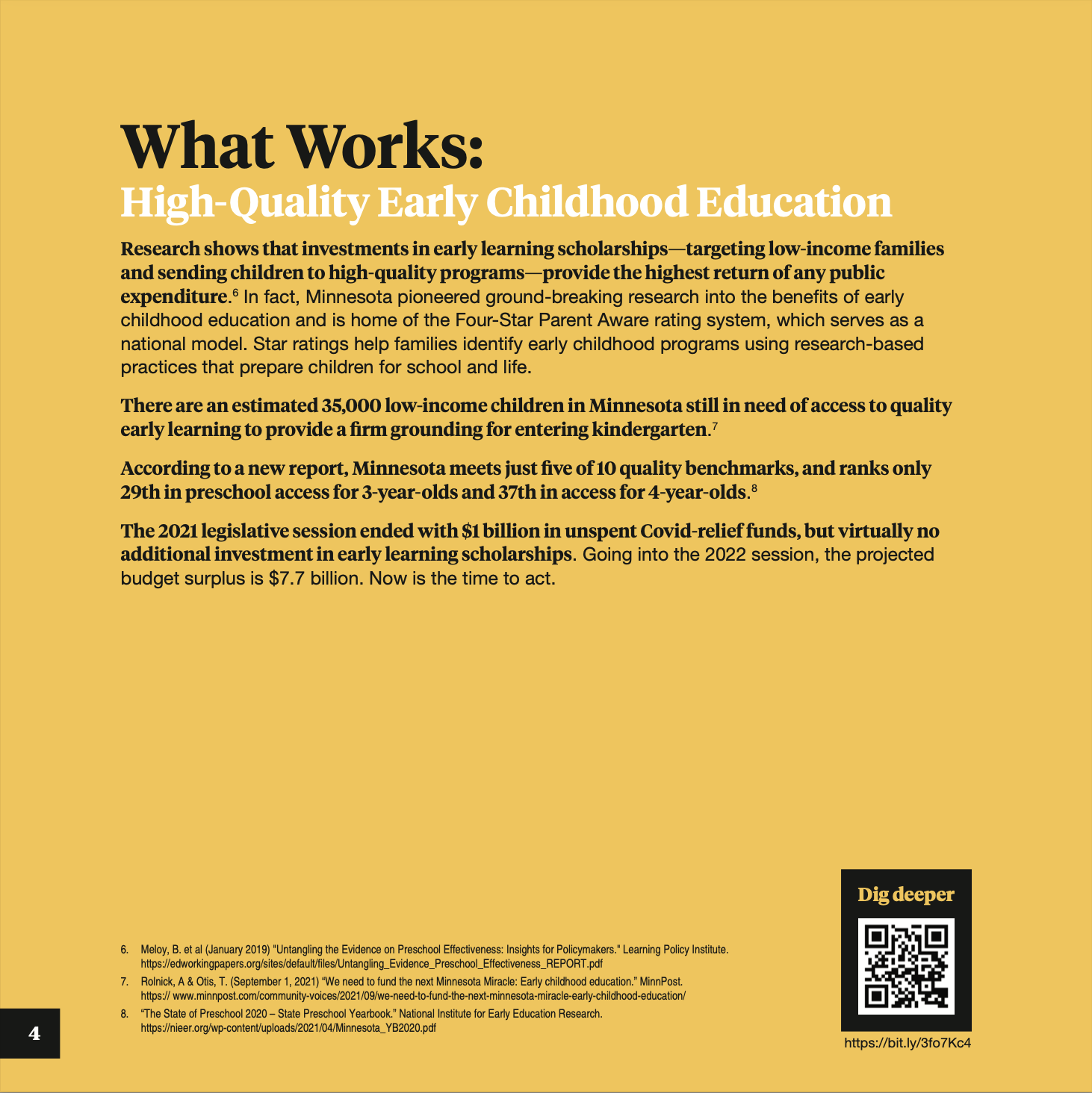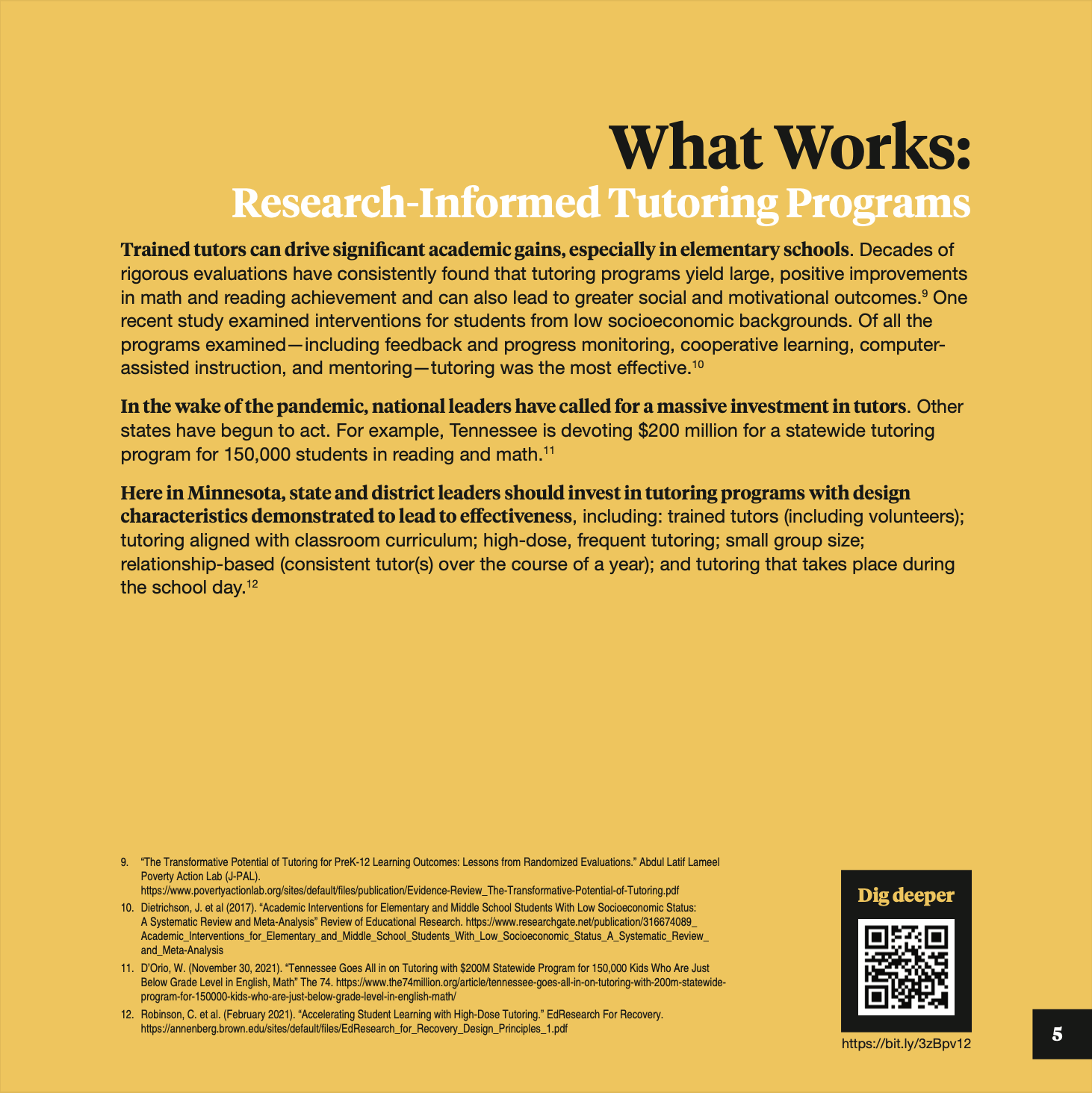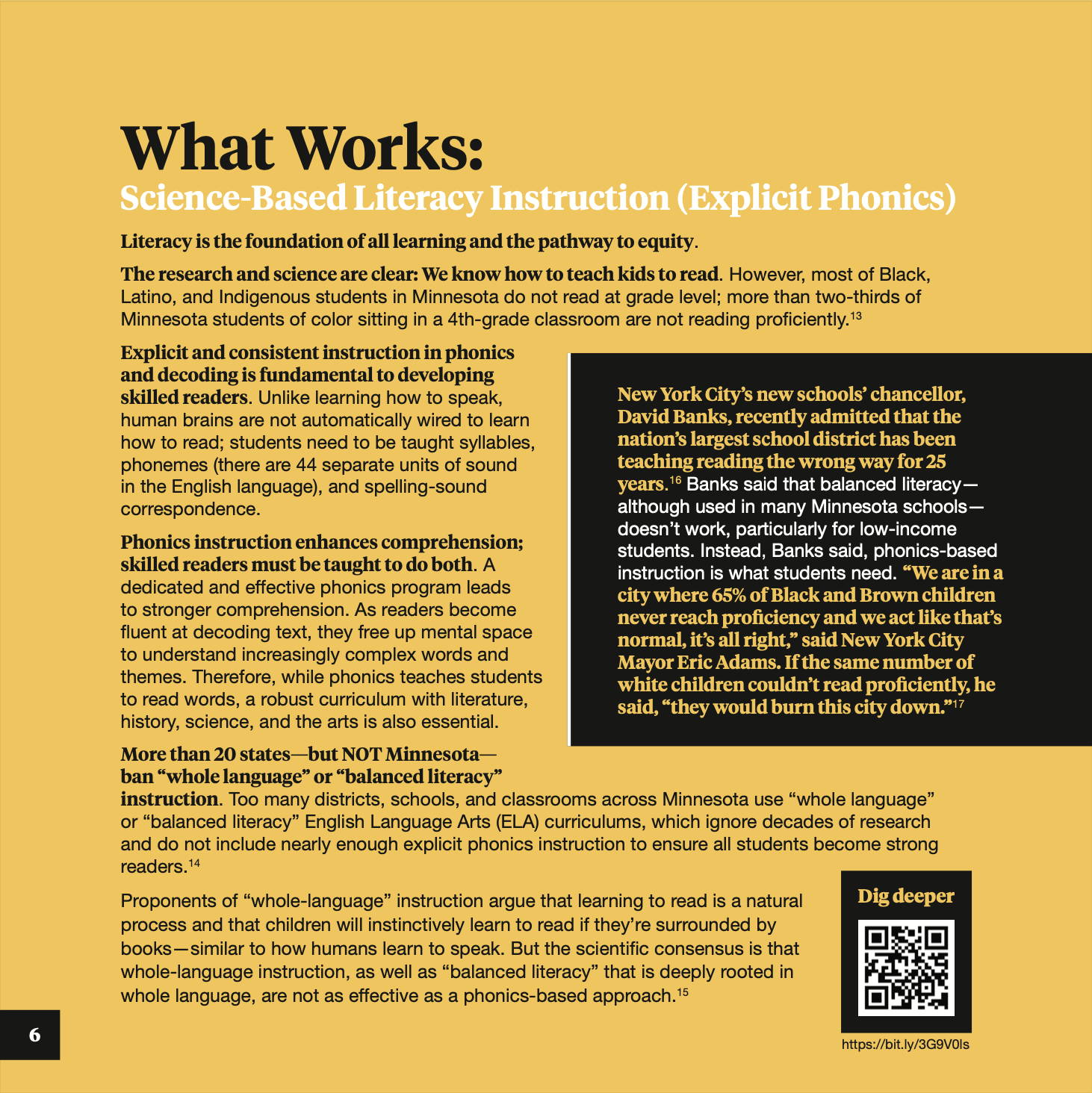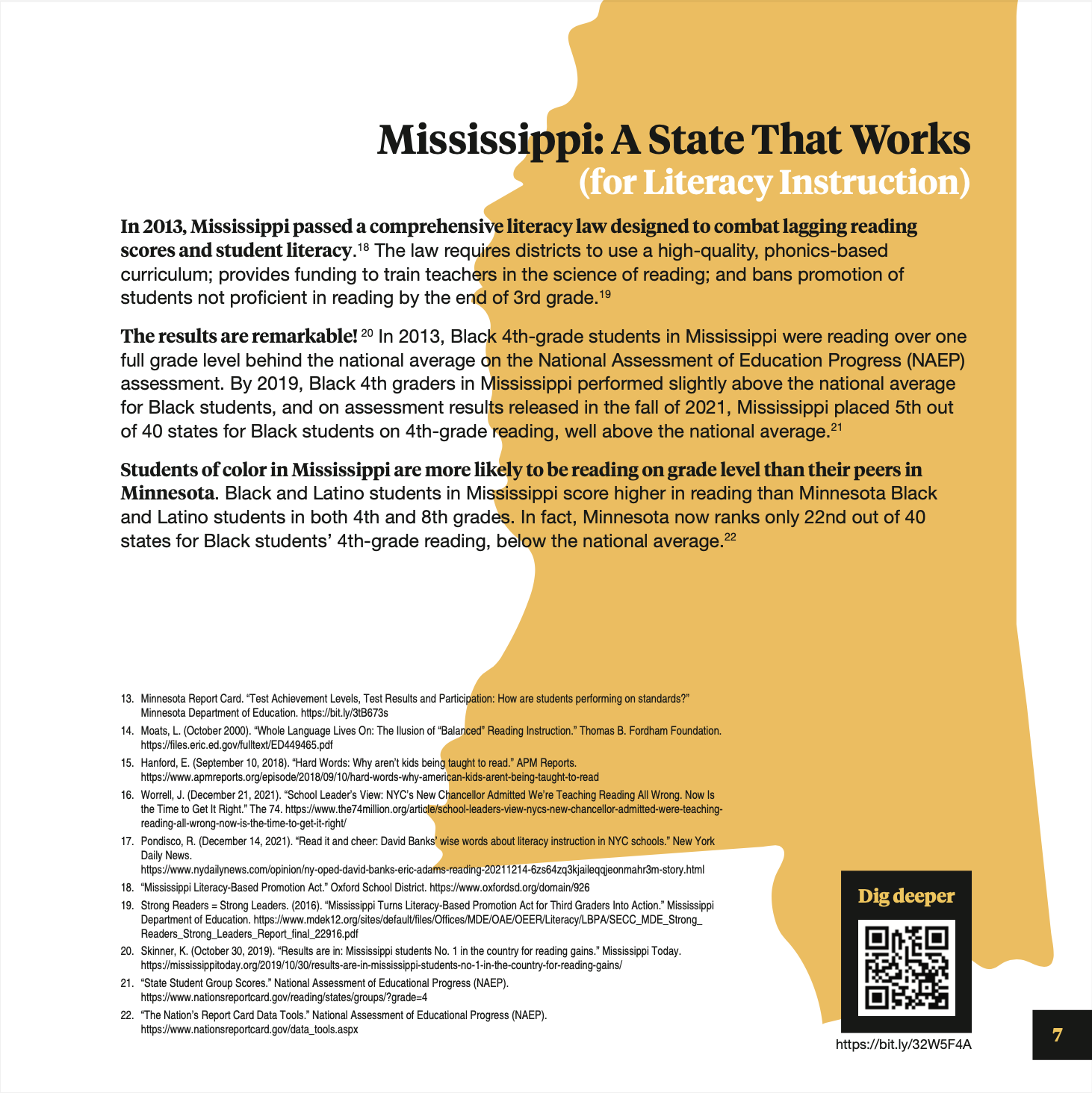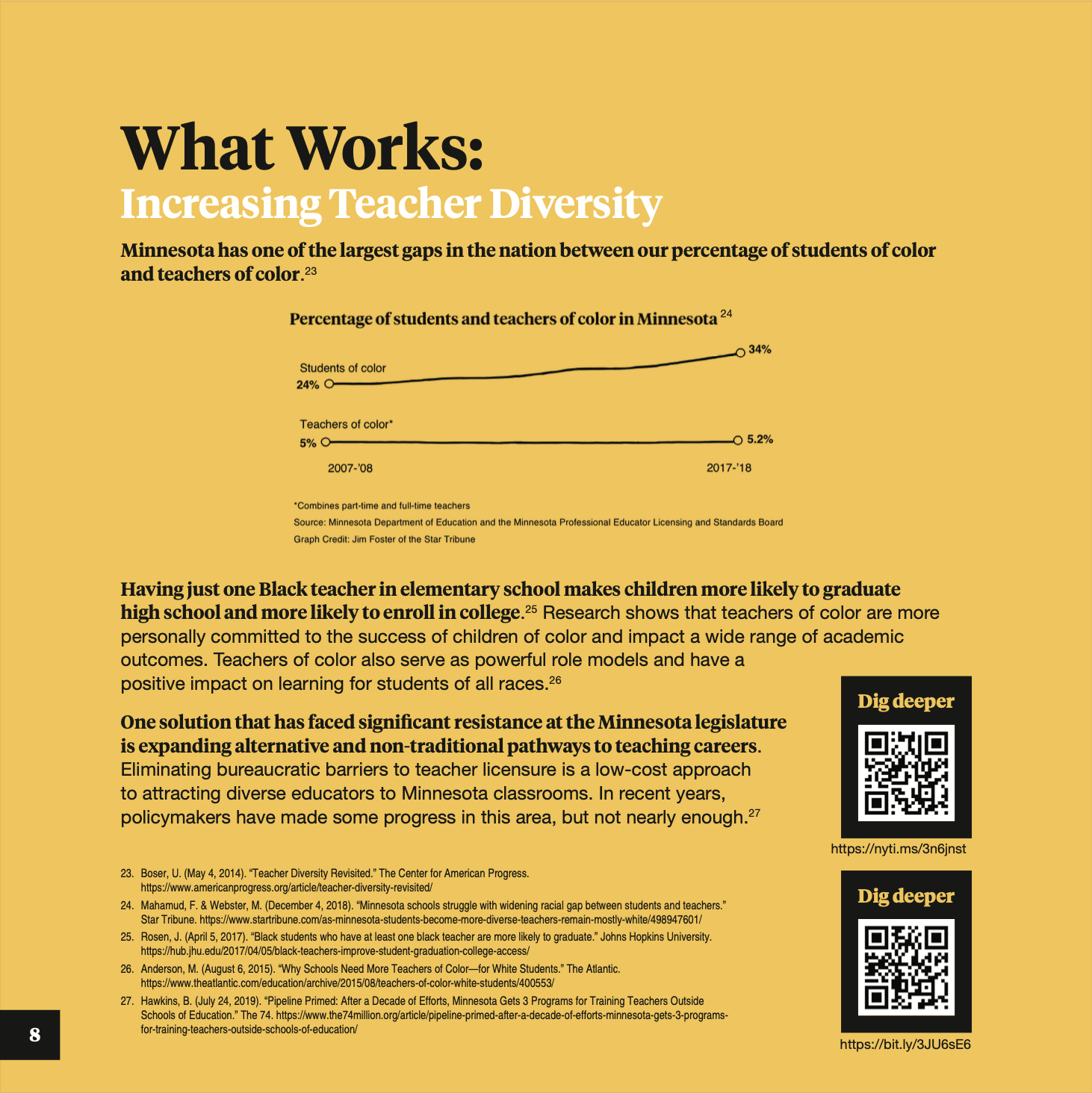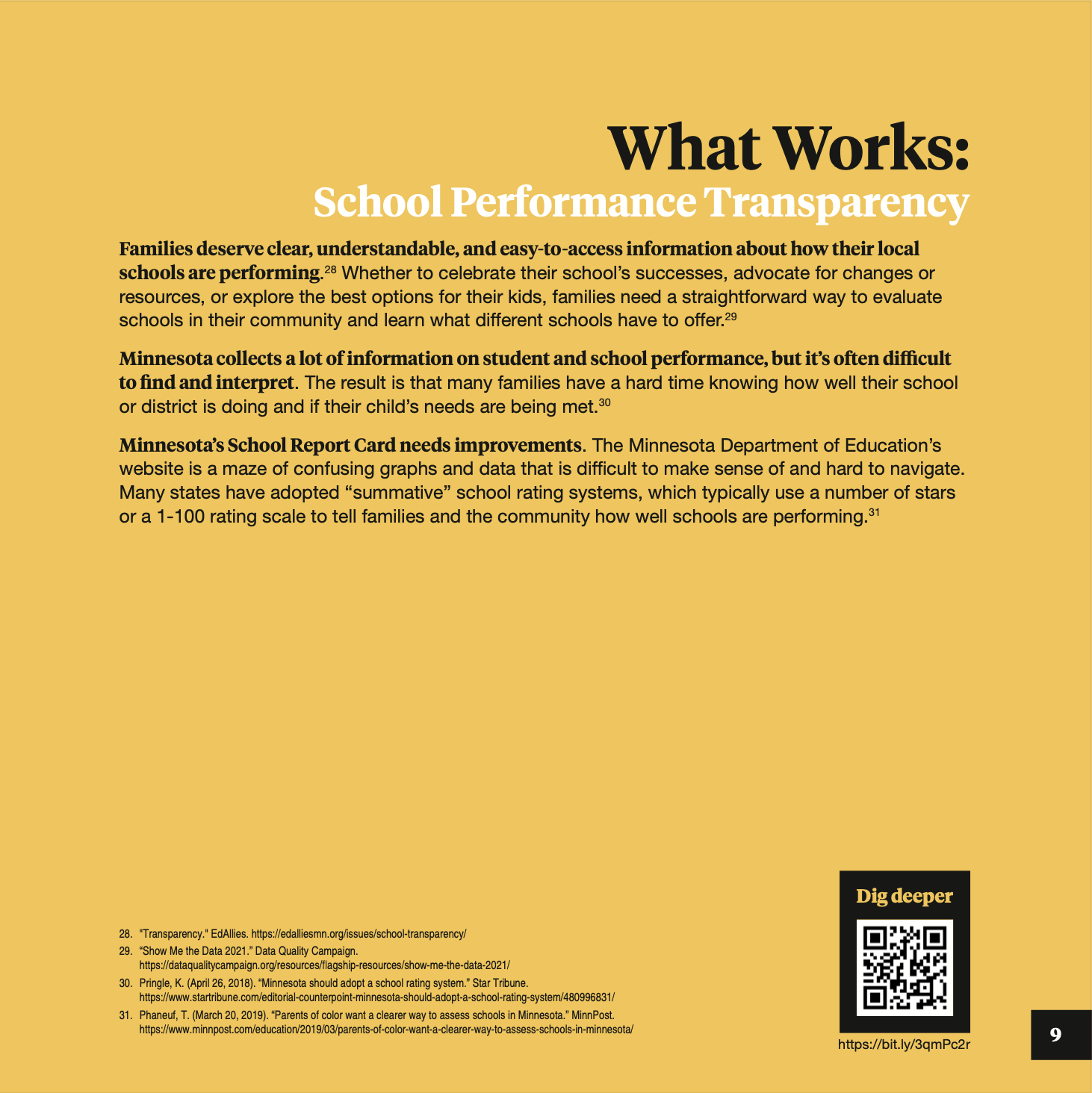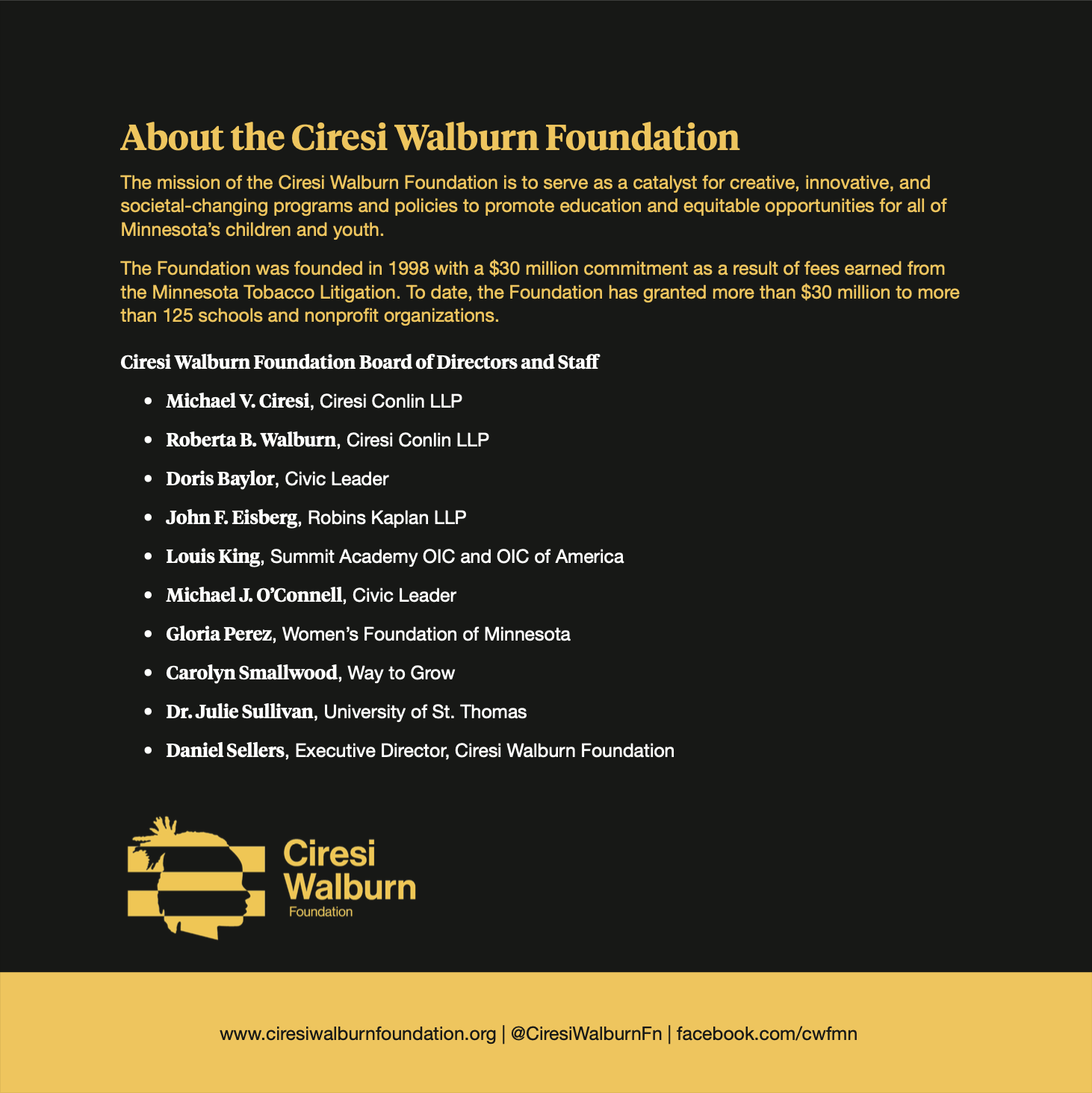We Know What Works. Why Don't We Take Action?
As we emerge from a pandemic that has disrupted learning and hampered academic achievement for students across the state, our policymakers need to couple financial investments in education with bold, research-backed policy changes.
Creating a Minnesota where all children can thrive requires a sobering examination of how we’re failing to meet the needs of our most vulnerable populations. The reality is that Minnesota has some of the largest gaps in the nation on academic outcomes measured by race and socioeconomic status.[1] Not only are our gaps large, but our students of color also perform worse in direct comparisons with students of color in many other states. On 8th-grade reading assessments given to students across the country, Minnesota’s Black students rank near the bottom (tied for 36th out of 41 states); Black students in Georgia, Florida, and Mississippi performed better than in our state.[2] And, our graduation rates continue to be amongst the worst in the nation for children of color.[3]
The good news is that we know what works to help all Minnesota children learn: research and experience have validated successful educational interventions that are concrete, actionable, and proven to work.
Our Foundation has produced a new booklet which digs into these proven solutions. We hope you’ll take a moment to check it out and share it with others. After all, if we know what works to help all Minnesota children learn, why don’t we take action?
High-quality early childhood education. To ensure a strong academic foundation prior to kindergarten, investments should be made in early learning scholarships, which target low-income families and send children to high-quality programs. According to a new report, Minnesota meets just five of 10 quality benchmarks for early childhood education, and ranks only 29th in preschool access for 3-year-olds and 37th in access for 4-year-olds.[4] Going into the 2022 session, the projected budget surplus is $7.7 billion; now is the time to act to increase both the quantity and quality of early childhood education options for families.
Research-informed tutoring programs. Trained tutors (including volunteers) can drive significant academic gains, especially in elementary schools.[5] In the wake of the pandemic, national leaders have called for a massive investment in tutors; other states have begun to act. For example, Tennessee is devoting $200 million for a statewide tutoring program for 150,000 students in reading and math.[6] Here in Minnesota, state and district leaders should invest in tutoring programs with design characteristics demonstrated to lead to effectiveness.
Science-based literacy (explicit phonics instruction). The research and science are clear: We know how to teach kids to read. Explicit and consistent instruction in phonics and decoding is fundamental to developing skilled readers. A dedicated and effective phonics program leads to stronger comprehension—as readers become fluent at decoding text, they free up mental space to understand increasingly complex words and themes and access a curriculum rich with literature, history, science, and the arts. Too many classrooms across Minnesota use “whole language” or “balanced literacy” curriculums, which ignore decades of research and do not include nearly enough explicit phonics instruction to ensure all students become strong readers.[7]
In recent years, policymakers have made some progress in this area, but not nearly enough.
Increasing teacher diversity. Minnesota has one of the largest gaps in the nation between our percentage of students of color and teachers of color.[8] Having just one Black teacher in elementary school makes children more likely to graduate high school and more likely to enroll in college, and teachers of color have a positive impact on learning for students of all races.[9] One solution that has faced significant resistance at the Minnesota legislature is expanding alternative and non-traditional pathways to teaching careers. In recent years, policymakers have made some progress in this area, but not nearly enough.
School performance transparency. Minnesota collects a lot of information on student and school performance, but it’s often difficult to find and interpret. The result is that many families have a hard time knowing how well their school or district is doing and if their child’s needs are being met.[10] Many states have adopted “summative” school rating systems, which typically use a number of stars or a 1-100 rating scale to tell families and the community how well schools are performing. An overhaul of Minnesota’s School Report Card is overdue.
Sources & References
[1] Grunewald, R. & Nath, A. (2019) “A Statewide Crisis: Minnesota’s Education Achievement Gaps.” Federal Reserve Bank of Minneapolis. https://www.minneapolisfed.org/~/media/assets/pages/education-achievement-gaps/achievement-gaps-mn-report.pdf?la=en
[2] “The Nation’s Report Card Data Tools.” National Assessment of Educational Progress (NAEP). https://www.nationsreportcard.gov/data_tools.aspx
[3] “Public high school 4-year adjusted cohort graduation rate (ACGR), by selected student characteristics and state: 2010-11 through 2018- 19.” National Center for Education Statistics. https://nces.ed.gov/programs/digest/d20/tables/dt20_219.46.asp
[4] “The State of Preschool 2020 – State Preschool Yearbook.” National Institute for Early Education Research. https://nieer.org/wp-content/uploads/2021/04/Minnesota_YB2020.pdf
[5] "The Transformative Potential of Tutoring for PreK-12 Learning Outcomes: Lessons from Randomized Evaluations.” Abdul Latif Lameel Poverty Action Lab (J-PAL). https://www.povertyactionlab.org/sites/default/files/publication/Evidence-Review_The-Transformative-Potential-of-Tutoring.pdf
[6] D’Orio, W. (November 30, 2021). “Tennessee Goes All in on Tutoring with $200M Statewide Program for 150,000 Kids Who Are Just Below Grade Level in English, Math” The 74. https://www.the74million.org/article/tennessee-goes-all-in-on-tutoring-with-200m-statewide- program-for-150000-kids-who-are-just-below-grade-level-in-english-math/
[7] Moats, L. (October 2000). “Whole Language Lives On: The Ilusion of “Balanced” Reading Instruction.” Thomas B. Fordham Foundation. https://files.eric.ed.gov/fulltext/ED449465.pdf
[8] Boser, U. (May 4, 2014). “Teacher Diversity Revisited.” The Center for American Progress. https://www.americanprogress.org/article/teacher-diversity-revisited/
[9] Rosen, J. (April 5, 2017). “Black students who have at least one black teacher are more likely to graduate.” Johns Hopkins University. https://hub.jhu.edu/2017/04/05/black-teachers-improve-student-graduation-college-access/
[10] “Show Me the Data 2021.” Data Quality Campaign. https://dataqualitycampaign.org/resources/flagship-resources/show-me-the-data-2021/


